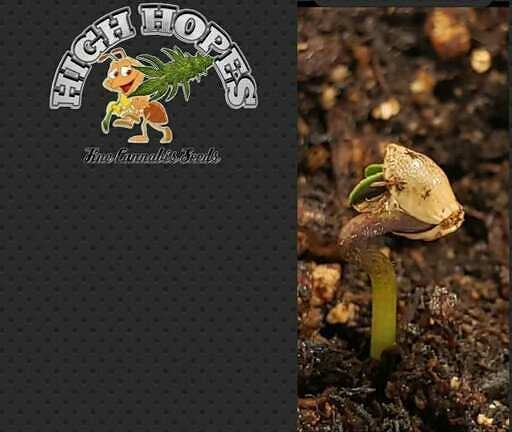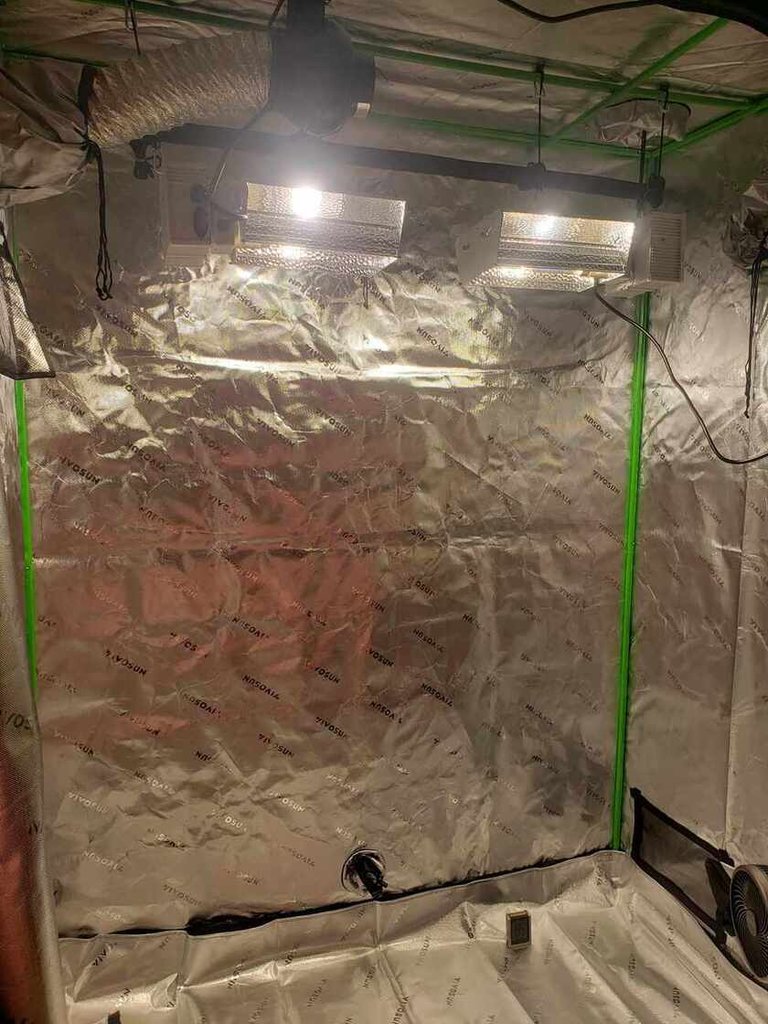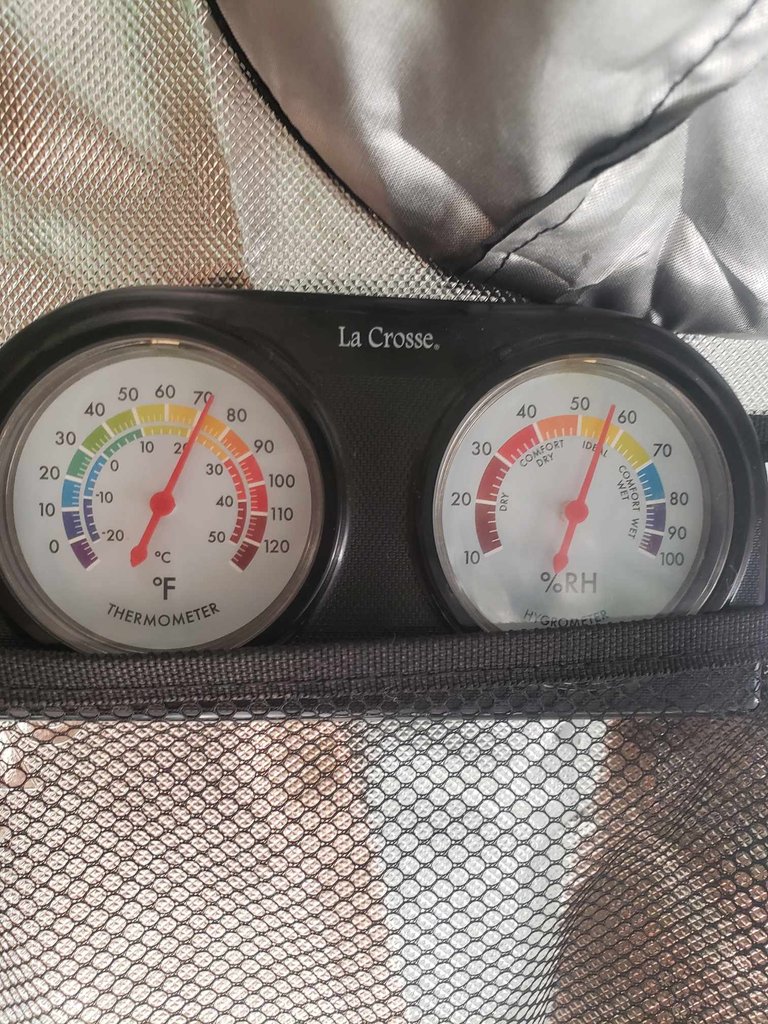
It's time for the Indoor Edition of our Grow With Us Series… Like our Sun-Grown Edition, we will document our entire indoor grow from start to finish, staying true to the purpose of sharing how simple and affordable it can be to grow your own Clean Green, Premium, Organic Cannabis at home.
Let's take a look at what we'll need:
First off, we'll need dedicated space for the grow.
Ideally, a high-producing indoor grow would be comprised of multiple stages… A veg/mother room, a clone section, and a flower room.
Additionally, having a climate-controlled space for drying your harvest is highly recommended.
These rooms could be a fixed-walled room, such as a modified closet or a room, designed for the purpose.
Grow Tents are a convenient option, that we'll be utilizing for this run.
It is feasible to grow in a single unit throughout, or start in one and build up from there… If you choose the latter, we suggest starting with the room you intend to use for flowering, as that capacity and purpose will be your final goal.
We chose to use a 60"long × 32" wide × 80" tall (14 sq ft) Vivosun grow tent.
In the future, we will add another tent for our mother plants and another for a clone/veg room.
NOTE: it's very challenging to grow in an outbuilding, to avoid a frustrating, disappointing experience, we recommend setting up your grow in an insulated, climate-controlled setting indoors.
After your grow space is set up, it's time to look at Lighting.
Things to consider when choosing lights are spectrum, canopy penetration, cultivation size, environmental control, and investment /maintenance cost.
There are many options available for Cannabis Cultivation...Considering the above-mentioned, for this run, we are running two 315w CMH (Ceramic Metal Halide) lamps.
Ceramic Metal Halide lamps produce the closest spectrum to the Sun..Sunlight has a CRI (Color Rendering Index) of 100, and the CMH/Bulb combo we are using has a CRI of 98 offering a significant improvement in spectral quality in comparison to other grow lamps, even providing the coveted UV wavelengths that stimulate greater trichome and terpene production,
as well as helping to fend off mold and mildew.
CMH lamps provide excellent canopy penetration.
Though CMH lamps run cooler than other HID lamps using similar wattage, they do produce heat, that will need mitigation.
Running CMH will require removing the heat with an exhaust fan and recirculating fresh air through an inlet...Having adequate ceiling height makes controlling temperatures easier and provides room to keep the lamps hung the proper distance above the plants.
If heat or its management is a concern, LED lamps are a better option, as they run cooler, making it easier to control the environment but because LED lamps lack the penetration of HID lamps, growers often utilize Low Stress Training (LST) and Scrog nets to create an even dense canopy.
I prefer not to top, train, or manipulate my plants.
As for initial investment, a comparable LED is 2 to 4 times the cost of a quality CMH fixture. LED fixtures, that include the UV spectrum, are very expensive in terms of up-front cost.


Looking at maintenance/operating costs:
The advertised wattage on a lot of LED lights needs to be more accurate… To obtain yields comparable to HID lamps, you will need a comparable draw… The belief that LED lights offer an infinite lifespan is false. The average degradation of LED lamps is around 10%-15% a year...They will need to be replaced after 3 years.
CMH bulbs have an average lifespan of 24000 hours and will need to be replaced after around 2.5 years.
Replacing an LED light cost $300 plus,
Replacing a $50-80 bulb is more efficient.
It's common for growers using CMH to use different bulbs for different stages of the life cycle… For example: Running a 4200k for veg and switching to a 3100K for flower.
We will be running Protopia 4,000K CMH lamps throughout the grow. (Veg/Flower)
The Protopia lamps have a
Color Temp of 4000K, with a Color Rendering Index (CRI) of 98
Luminous Flux (LM): 33000
Initial PAR: 540μmol/s
If you research different types of grow lamps, you might want to familiarize yourself with some of the common terms of measurement used to figure lighting efficiency/effectiveness, a few of which are:
- Color Rendering Index (CRI) is a measurement of how natural colors render under an artificial white light source when compared with sunlight. (100)
Typically, light sources with a CRI of 80 to 90 are regarded as good and those with a CRI of 90+ are excellent! - Luminous Flux measures the power of visible light produced by a light source measured in lumens (lm).
- PAR, stands for Photosynthetically Active Radiation...PAR is used to describe the bulk of the range of light wavelengths that plants can use for photosynthesis
- DLI, 'Daily Light Integral’ is defined as a measure of usable light your plant receives over the course of a day.


Hold on a minute, this is supposed to be simple!
Back when we started growing indoors, under lights, we used standard Metal Halide and High-Pressure Sodium lamps and watts per square feet as a guide to performance efficiency...Worked then and still will...The minimum you could get by with is 20wpsf..... To figure your watts per square foot, measure your grow space square feet by taking the Length × Width of your grow room...in our case, it's 5' long × 2' 8" wide...totaling 14 square feet.

Now figure out the total wattage of your lamps.
Ours is 630 total watts.
Now divide the number of watts by the number of square feet 630 ÷ 14 = 47 watts per square sqft..... Easy..... Even easier is looking at the recommended coverage area of your lamp… A 315 CMH will adequately cover a 4' × 4' space in vegetative growth and a 3' × 3' in flower...Our flower space is 2'8" × 5' so we have more than enough lights to do the job...Not so hard is it?
Now we need to consider the environment.
Adequate airflow is Paramount to keep
Temperature and Humidity in range.
You will need a quality oscillating fan, I like to keep a relatively strong breeze on my plants, from seedling until harvest.
The airflow allows your plants to breathe, improving photosynthesis, and nutrient absorption and generally increasing your plants' strength. The wind resistance ensures that the stems and branches will grow stronger, allowing them to support the weight put on during the flowering period.
Using an exhaust fan to remove heat and draw in fresh air prevents stagnant air and helps regulate the internal temperature and humidity.
The minimum air exchange is once every three to five minutes, which is fine for a cool running LED grow but for the heat generated by HID lights, I like a little more.
Our tent is 2'8" wide × 5' long × 6'5" tall
86.6 cubic ft .....The exhaust fan we're running moves 195 cubic feet per minute, which will exchange the air in the tent 2.24 times a minute. This keeps our temperature between 75°and 80°F and our relative humidity levels at 55% which is “right” where I like it.
The system we are utilizing is referred to as an "open-loop" or ventilated system.
This type of system is the most user-friendly and economical choice.
Closed-loop systems involve having a completely sealed grow room. No air is extracted from or drawn in from outside the sealed grow space. Instead, a heater and an air conditioning unit keep the temperature within the right range. Humidity is controlled by the use of dehumidifiers and humidifiers. In a closed-loop system with no air being drawn out or in, the use of C02 (Carbon Dioxide) supplementation is most effective.
C02 supplementation is not a "have to" but
Cannabis Plants respond favorably to CO2 levels at anywhere up to 3-4 times higher than is found naturally in the air around us.
Outdoors, the average concentration of C02 is 300- 400 PPM (Parts Per Million)
Obviously enough.

Occupied indoor spaces, like our homes, have typical concentrations of
400-1,000 PPM… More than enough for good growth and development.
However, boosting concentrations up to 1200-1500 PPM has beneficial effects in regards to yields and allows cannabis plants to handle higher temperatures.
Most Closed-Loop systems add supplemental C02 with a bottle, controller, and regulator...Or a propane-burning C02 generator… Growers on a smaller scale can purchase self-activated C02 bags, that utilize a mycelial mass to produce C02
Growers on a budget can economically generate C02 through fermentation, utilizing Sugar, Water, and Yeast.
I'll do a post specifically on this topic later in the series.
After you have your space, lights, and environmental controls, I recommend setting everything up and letting it run, allowing you to evaluate and troubleshoot any issues there may be BEFORE you add your plants.
In our next installment, we'll be discussing choosing the right Soil, Supplements, Pots, Watering, Genetics, and our favorite Cultivation techniques.
STAY TUNED
Same Bud Time Same Bud Channel
Good Growing and Happy Harvest.

All photos taken with Samsung Galaxy S9. Dividers and Banners created by @the13anarchist and @jonyoudyer
Graphics/Photos edited with: PixelLabs | LunaPic
SoHum Living Soil Image



